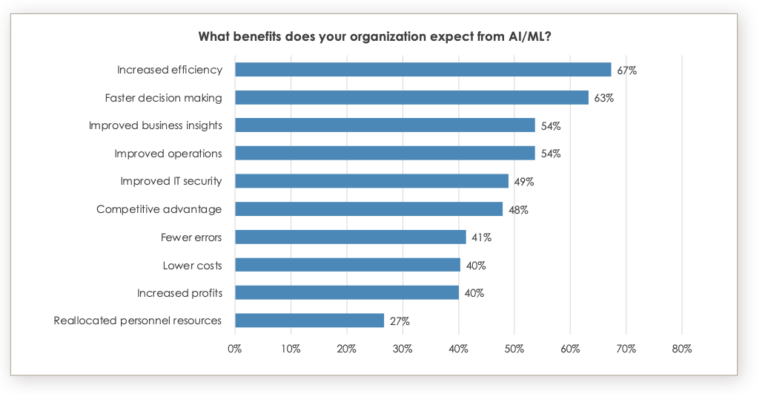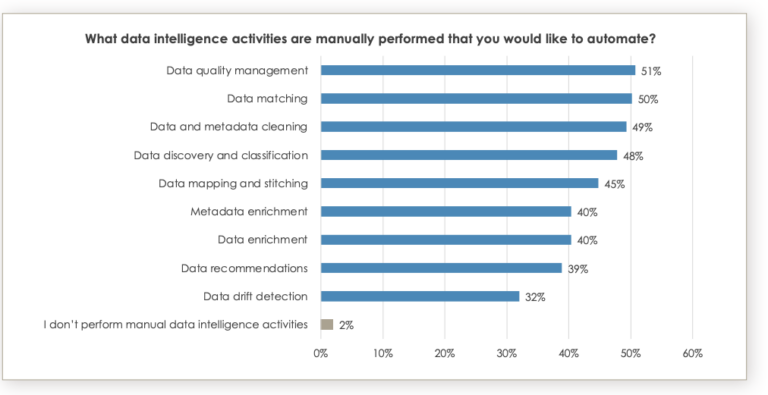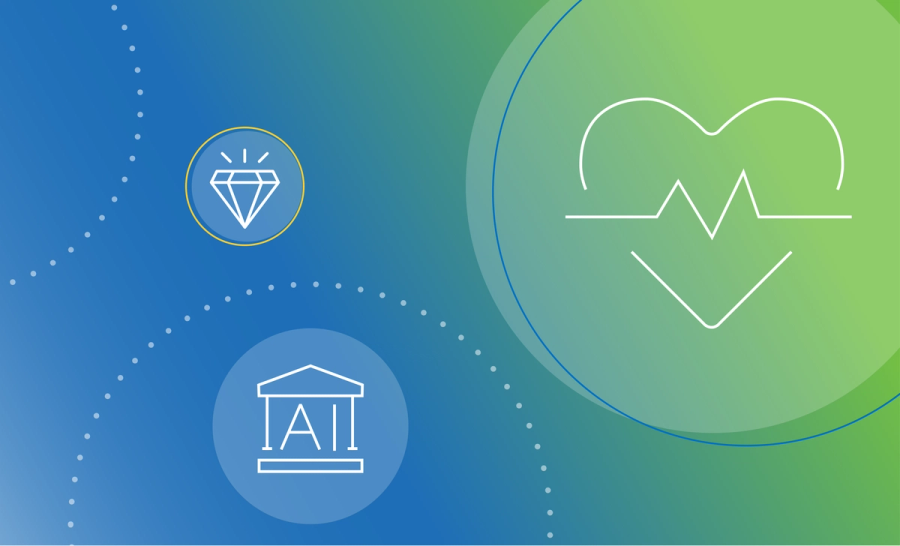AI driving the future of data intelligence

As Dave Mosley — CEO of Seagate Technology — states, “the value that a company derives from data directly affects its success.” To be consistently successful, you have to tap into every stream of data, and ensure the data used for analytics is reliable and trustworthy. However, doing so can be difficult.
Around two-thirds of the data that is available to businesses is not utilized. Sometimes companies are unable to derive deeper, actionable insights from the data because the data is inaccurate, not accessible, or secure.
Forward-looking companies use data intelligence to remedy these issues. Data intelligence combines factors from data quality and governance to metadata management. It gleans ‘intelligence’ from metadata, allowing companies to understand the intricacies of their data to unleash its true value.
However, data intelligence is just a piece of the puzzle: Artificial Intelligence (AI) is the final piece. By entwining the two, progressive organizations are powering faster, accurate decision-making.
What’s Data Intelligence?
Data Intelligence is the output or result of understanding and governing data, ensuring it is treated according to privacy/security requirements, and connecting the right trusted data and insights to the right people.
When properly implemented, data intelligence enables people in the organization to intuitively access data (and its resultant insights) to drive informed decision-making.
What’s Artificial Intelligence?
Artificial intelligence is the simulation of human intelligence by computer systems. In the data analytics realm, an AI program is a computer system trained on data to solve problems and improve decisions. It self-updates and adapts based on the information you throw at it, and the results that it achieves.
In this latest research, “Data Intelligence Leading the Next Wave of AI/ML Solutions” from Dimensional Research the survey has revealed that 77% of companies that use AI in data analytics record positive experiences. In fact, these companies achieve a slew of benefits including increased efficiency, faster decision-making, and improved business insights, to name a few.

How AI powers Data Intelligence
This study revealed that 51% of organizations that have implemented AI technologies like machine learning, natural language processing and more, use them to power data intelligence. There are many ways AI is driving data intelligence strategies:
1. Unify data for comprehensive analytics
Even though organizations have enough data to spur better decision-making, most of it wastes away in digital drawers. The deluge of data and pockets of siloed knowledge pose the biggest stumbling block to successful data intelligence.
Remember: for data intelligence to be effective, it must take into account all data that powers decision making within the business. You have to unify data from all sources, then, you need to gather reliable and trustworthy data for analytics. This is where AI comes in handy for data intelligence.
Deep learning and machine learning pull data across platforms, including the hard-to-track ones. For example, computer vision helps extract data from pictures, natural language processing transcribes spoken words (and vice versa), and machine learning scrutinizes data heaps to unearth patterns.
In addition, AI pinpoints outliers in data to discern what pieces of information are considered significant for analytics. AI’s biggest advantage is its learning ability. It uses past instances to develop rules for future data quality control and governance. With time, it gets better at filtering out the proverbial bad apples from data sets, solving the garbage-in-garbage-out problem.
2. Enrich metadata
Traditional data management tools couldn’t drive action from available metadata signals. As a result, the impact of metadata was limited. Additionally, the systems were fundamentally static tools that couldn’t document or curate metadata without human assistance.
How can you mitigate these fundamental flaws?
Deriving intelligence with an active metadata graph helps manage data in a much more innovative, efficient, and scalable way. It provides greater visibility into your data landscape, enabling you to evaluate the right data for your needs.
However, building an active metadata graph manually can be tedious and time-consuming. It’s no surprise, then, that 40% of organizations that enrich metadata manually are looking for ways to automate the process, especially through AI technologies.
AI intelligently automates data cataloging, classification, lineage, auto-linking, and rich content to data assets at scale. As a result, organizations don’t have to rely on human effort to extract metadata details (such as business, topic, provenance, or location) held within data infrastructures.

3. Enhance analytics
AI powers analytics in different ways, including:
Discovering new insights
Machine learning systems automatically analyze data to unearth hidden trends, insights, and patterns that would otherwise be difficult to uncover with traditional systems. Most importantly, AI-driven automation allows users to explain findings much more quickly.
For example, in medicine, AI algorithms help doctors better analyze data and customize prescriptions to the genes. Rather than prescribing medicine that’s good for the average person, they can tailor a drug to the patient.
Predicting outcomes
By combining data intelligence and machine learning, businesses can predict marketing channels, consumer preferences, product development, demand, and more. For example, fintech companies use AI to anticipate changes and trends in financial markets. They then use these predictions to adapt their approach to mitigate risk.
Bridging the insights gap
As we mentioned earlier, the role of data intelligence transcends analytics. To be effective, the insights, trends, and patterns must be presented in an easy-to-digest format to everyone who needs them. AI has enabled organizations to achieve this in various ways.
Machine learning with AI-driven automation derives insights from data, and Natural Language Query (NLQ) converts them into a human-readable format such as informative intuitive visualizations. As a result, people in the organization can receive data in a format that is easier to understand.
Within seconds, users can glean insights and patterns that would otherwise be hidden in tables and datasets. The ability to drill down into reports as per user requirements enhances data literacy whilst also freeing up time for data scientists in the company.
Make the most of AI in Data Intelligence
According to statistics, companies that are currently using AI use it to drive tasks focused on data intelligence. 36% use it to improve data quality, 29% are focused on governance, and 23% are working on privacy. As we mentioned, 77% of these companies are achieving positive results with AI.
That said, AI implementation is not without challenges. The research found that 46% of companies cite insufficient resources (hardware and software) as the key obstacle, whilst 28% claim the available AI solutions lack key features to drive their initiatives.
In this post:
Related articles

AIMay 21, 2024
Collibra wins prestigious 2024 Communicator Award for AI Governance campaign

AIJuly 15, 2024
How to observe data quality for better, more reliable AI

AINovember 13, 2023
AI ethics and governance: responsibly managing innovation

AI GovernanceFebruary 28, 2025
AI agents: Build or buy, governance remains critical
Keep up with the latest from Collibra
I would like to get updates about the latest Collibra content, events and more.
Thanks for signing up
You'll begin receiving educational materials and invitations to network with our community soon.
